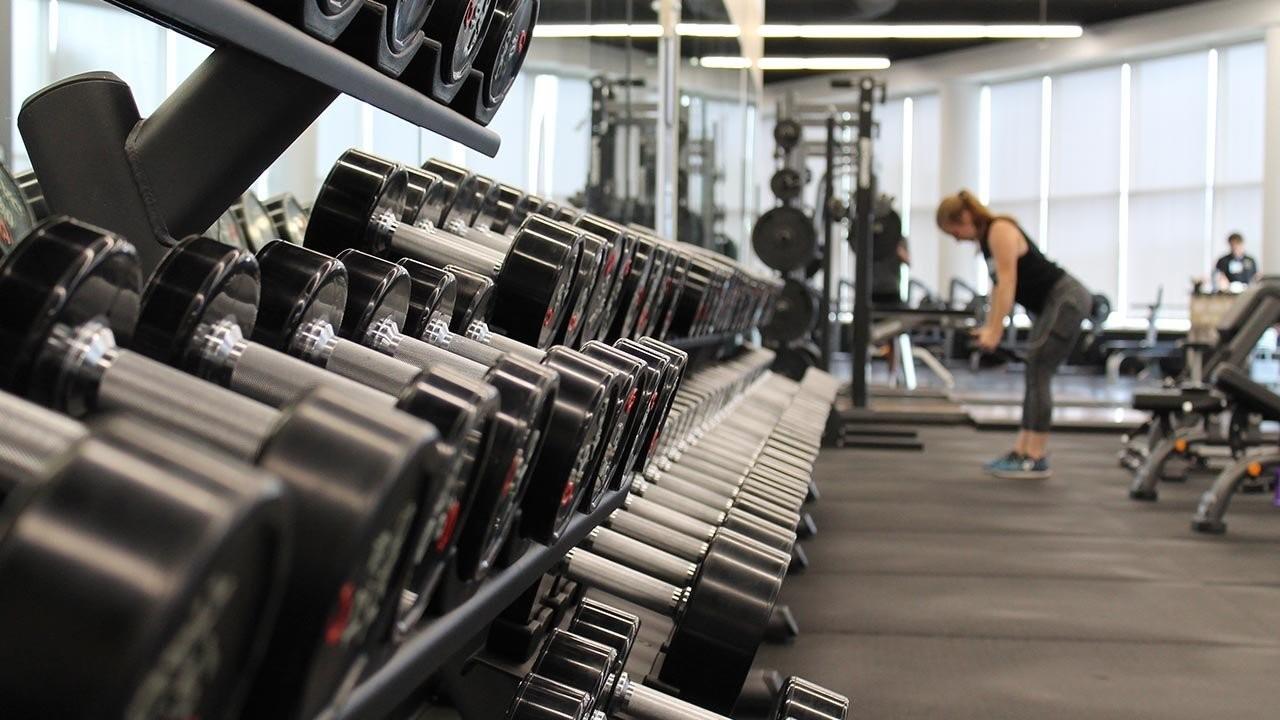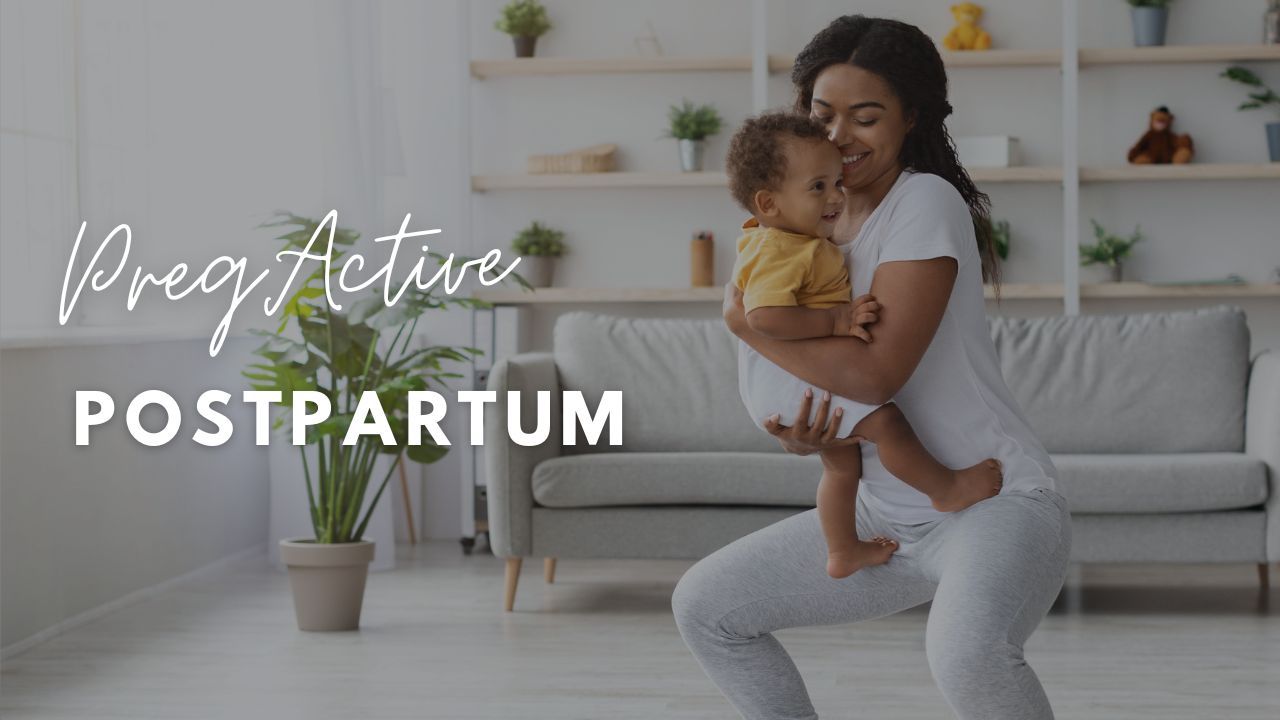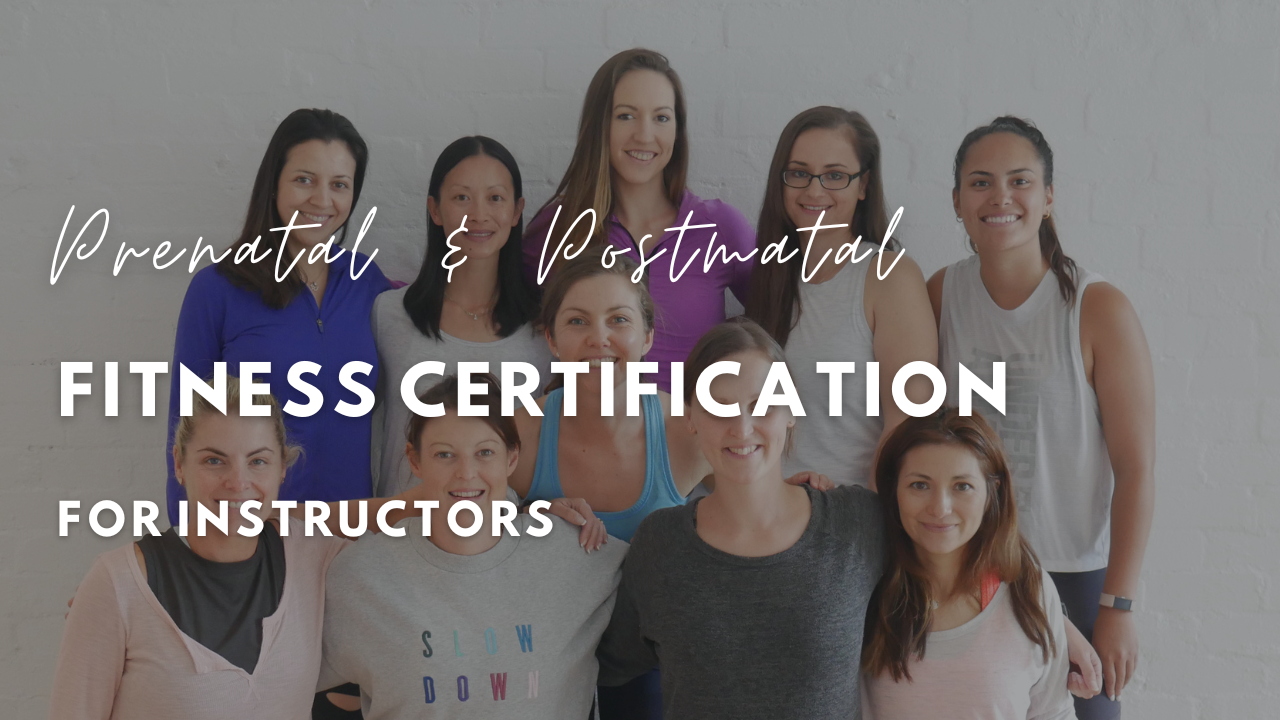Safe Gym Workouts for Pregnant Women

Safe Gym Pregnancy Workouts
There is often a lot of confusion, along with misleading advice, when it comes to the best gym equipment to use when pregnant. Let's make sure your pregnancy gym workouts get you fit and healthy while keeping you safe at the same time.
If you enjoy going to the gym then I want you to focus on what exercises you are doing, what machines you are using, and the technique you are using for each of your lifts.
If you get one of these wrong, then you could sustain a long term injury which is the last thing you need when pregnant.
Benefits of Gym Workouts
Exercising during pregnancy can offer numerous health benefits for both mother and baby, including improved cardiovascular health, reduced pregnancy discomforts, better sleep, and a smoother labor process.
Regular physical activity can also help manage weight gain and prepare the body for the demands of childbirth.
However, it's essential to approach gym workouts with an understanding of the changes occurring in the body and how to adjust exercises accordingly.
The benefits of maintaining an active lifestyle through gym workouts are supported by various health organizations, which often recommend moderate-intensity activities.
Evidence Based Guide to Gym Workouts
Always get clearance from your obstetrician or midwife first, especially if you have any complications (e.g., placenta previa, preterm labor risk, severe anemia, or heart/lung issues).
General Safety Rules (All Trimesters)
1. Stay hydrated and avoid overheating.
2. Avoid exercises lying flat on your back after ~16-20 weeks (reduces blood flow to the baby).
3. Stop immediately if you feel dizzy, short of breath, vaginal bleeding, contractions, fluid leaking, or calf pain/swelling.
4. Use the 'talk test': You should always be able to hold a conversation.
5. Avoid contact sports, activities with fall risk (e.g., gymnastics, horseback riding, downhill skiing), scuba diving, or hot yoga/Bikram.
Special Notes
Diastasis recti - Watch for coning down the midline; if it happens, reduce load or change exercise.
Round ligament pain -Common in 2nd trimester; ease up on deep twisting or sudden movements.
Pelvic floor - Do both contractions (Kegels) and relaxation exercises-many women only strengthen and then can't relax during delivery.
Best Cardio Options in Pregnancy
1. Swimming/water aerobics (takes pressure off joints)
2. Stationary bike or recumbent bike
3. Elliptical (with arms)
4. Incline treadmill walking
5. Rowing machine (moderate pace)
Be a Strong Mama
These workouts can help strengthen muscles, improve mood and energy levels, and potentially reduce the risk of gestational diabetes and preeclampsia.
As always, it's crucial for pregnant women to consult with their healthcare provider before starting or continuing any exercise routine.
So let's get started in answering some of your questions and providing you with a list of what machines you can use and which ones you need to avoid.
1. Can pregnant women still use the gym?
Yes, of course. Use extra measures to ensure you wipe down machines and that those around you are also doing the same. While you can use the gym, there are certain classes, exercises and machines you must avoid.
2. Can I use weight machines while pregnant?
Yes, but not all. If the machine places excessive strain on your lower back then try to avoid them.
You are at an increased risk for musculoskeletal injury. This is because the placenta produces the pregnancy hormone called relaxin, which relaxes the body's joints.
This is critical since the pelvis needs to expand to accommodate the growing uterus and baby. It also allows the baby to pass through the birth canal during delivery.
There are so many types of machines in the gym to cover all in this article.
But essentially it comes down to using your judgement and avoiding machines that can cause you injury like the ones listed below.
What else?
You can use the squat rack but use a lower weight and make sure you use correct technique.
Pin-loaded machines become more of a commonsense choice when pregnant as they provide you with more control as compared to many dumbbells and barbell exercises where you may lose your balance.
Avoid any machine with a pad that presses against your belly, such as the seated row machine or abdominal machines.
Avoid heavy overhead lifts as they can increase the curve in your lower spine (aka hyperlordosis).
When to Avoid the Gym
While exercise is generally beneficial during pregnancy, there are circumstances when it should be avoided.
Refrain from gym workouts if you have medical conditions such as heart disease, lung disease, or persistent bleeding.
Additionally, if you experience symptoms such as vaginal bleeding, persistent dizziness, headache, chest pain, calf pain or swelling, preterm labor, decreased fetal movement, or amniotic fluid leakage, it's crucial to stop exercising and seek medical attention.
Listen to your body and adjust your workouts as needed. Pregnancy is not the time to push for personal bests or high-intensity training.
The goal is to maintain a healthy and active lifestyle that supports both your well-being and that of your growing baby. Always follow the advice of your healthcare provider regarding physical activity during pregnancy.
3. Workouts to Avoid
No matter what exercise or machine you are doing, I want you to avoid the following:
1. Pushing movements exercises that cause your abs to bulge or peak outwards.
2. Isometric exercises that cause your abs to bulge or peak outwards.
3. Lying on your stomach.
4. Crunching, twisting and any movements that cross your mid-line as this can exasperate abdominal separation.
5. Lying flat on your back - the pressure of the baby can cause interruption of blood flow back to the heart
6. Rotational movements that collapse the space of the womb.
7. Holding your breath, it creates too much pressure on the pelvic floor.
Safety Tips for Pregnant Women at the Gym
Pregnancy is a time to prioritize safety and listen closely to your body.
Start by choosing low-impact exercises that minimize the risk of injury and avoid activities that involve lying flat on your back after the first trimester.
It's important to stay hydrated, avoid overheating, and wear supportive clothing and footwear.
Use proper form to prevent strain on the joints, which are more susceptible to injury due to the hormone relaxin.
Avoid high-intensity workouts that lead to breathlessness, as this can decrease oxygen flow to the baby.
Always warm up before exercising and cool down afterward. Be mindful of balance as the center of gravity shifts during pregnancy, increasing the risk of falls.
If you experience any discomfort, bleeding, dizziness, or other warning signs, stop exercising immediately and consult your healthcare provider.
4. Gym Equipment to Avoid in Pregnancy
1. It basically comes down to using common sense. Any piece of gym equipment that creates an unstable surface such as BOSU or wobble boards. Your center of gravity just isn't what it was before!
2. Any equipment that requires you to lie on your stomach. For example, swap the lying hamstring curl for the seated hamstring curl.
3. Try and avoid abductor and adductor machines due to the pressure it puts on the pelvic girdle. There are plenty of other great prenatal exercises to strengthen these muscles.
4. Lat pull-down and assisted chin up machine as the technique is difficult to master when pregnant.
Also, they place a lot of stress on your abdominal muscles which is just bad news if you have abdominal separation.
The intra-abdominal pressure and any excessive curvature of the spine on either exercise can cause abdominal peaking.
5. Avoid benches or equipment that has a 45 degree angle such as a back extensions and glute / hamstring machine due to the position you need to be in when using them.
5. Should I continue to exercise when pregnant?
Yes, absolutely. It's a great idea to exercise during pregnancy. The Centers for Disease Control and Prevention recommends that expecting women engage in at least 150 minutes of moderate intensity exercise every week.
But as always, consult your doctor first prior to starting any gym workout.
Research has shown that women who exercise regularly are less likely to develop gestational diabetes, and on average have shorter labors, less constipation, and less swelling in the extremities.
Cardio and strength exercises are good for you and good for your baby.
The key, like any other exercise during pregnancy, is to modify your routine as your baby bump gets bigger.
If an exercise or cardio-machine in the gym doesn't feel comfortable, simply move on and try a different exercise.
Best Gym Exercises for Each Trimester
First Trimester
During the first trimester, focus on establishing a routine with exercises like walking, swimming, and stationary cycling. Strength training with light weights can also be beneficial.
Most women can continue their pre-pregnancy routine if they feel well.
Safe and beneficial:
1. Strength training (moderate weights, higher reps 10–15)
2. Cardio: stationary bike, elliptical, swimming, walking, rowing. PregActive classes
3. Bodyweight or light resistance: squats, lunges, rows, overhead press (standing), modified push-ups
4. Pelvic floor (Kegels) and deep core activation (transverse abdominis breathing)
2nd Trimester
In the second trimester, you might include exercises like prenatal yoga and Pilates for flexibility and core strength, while continuing with low-impact cardio.
Focus shifts to stability and avoiding coning/domination of the abdomen.
Safe modifications:
1. Incline bench or seated machines instead of flat bench press
2. Sumo stance squats and wider-stance deadlifts (less pressure on pelvis)
3. Single-leg work (improves balance as center of gravity shifts)
4. Cable or band work for rows, pallof presses (great anti-rotation core stability)
5. Cardio: continue low impact (swimming is excellent now)
Avoid:
Crunches, sit-ups, Russian twists, or heavy loaded movements that cause coning
Jumping or high-impact (burpees, box jumps, running if it feels uncomfortable)
3rd Trimester
In the third trimester, the emphasis should be on maintaining mobility and comfort, with exercises like squats, pelvic tilts, and gentle stretching to prepare the body for childbirth.
Goal: maintain strength, improve circulation, prepare for labor. Intensity and range of motion usually decrease.
Recommended choices:
1. Seated or standing upper-body work (seated row, lat pulldown, seated shoulder press)
2. Supported squats (holding TRX or smith machine)
3. Glute bridges/hip thrusts (excellent for labor positions)
4. Incline walking on treadmill (great for swelling and stamina)
5. Pelvic floor lengthening + strengthening (important for delivery)
6. Gentle mobility: cat-cow, hip circles, side-lying leg lifts
Trimester Modifications
Each trimester presents unique challenges and modifications in the workout routine are necessary. It's advised to reduce the intensity and duration of workouts as pregnancy progresses.
Always consult with a fitness professional who is experienced in prenatal exercise to ensure the safety and effectiveness of your workout plan.
Using the Treadmill when Pregnant
Running during pregnancy is OK. Yes, it can be high-impact, and there are definitely some better exercise you could do.
But if you were a keen runner before pregnancy, then it is OK to continue running.
And the treadmill a great way to get exercise if you are restricted to exercising indoors.
Balance is the most important concern when walking or running on a treadmill so be sure to hold on tot he side rails in case you slip or fall.
I want you to adjust the machines' speed, incline and tension to a level that's comfortable for you. Forget about running to exhaustion as this is not good for you or baby.
Upright Cycle
Cycling when pregnant is an excellent low impact activity that's safe to continue throughout pregnancy.
While many women continue to ride a bike on the roads, there is the increase risk of falling or losing your balance which is why a static gym bike is ideal exercise for pregnant women.
You will need to adjust the seat to the correct height, with the seat level to your hip joint when standing next to the cycle. Remember to slightly bend your knees.
Recumbent Bikes
There's no impact with a recumbent bike. Recumbent bikes are a good alternative to the upright stationary bikes, both for comfort in style of seat and position.
The back support is beneficial for both joint and back pain while the cycling still offers a solid cardio workout.
As your baby bump grows it can become difficult to cycle with your knees in alignment, making the recumbent bike less comfortable but do what works best for you.
Whether you prefer using an upright bike or a recumbent bike, gradually reduce your speed during the second and third trimesters.
Can I Use a Stair Climber if I am Pregnant?
You should use the stair climber with caution. Balance is a major concern use the support of the handrails.
You will still get a complete workout that builds muscle in the lower body but avoid pushing to exhaustion.
If you experience any pelvic pain when using a step machine stop right away. And reduce your time on the stepper as well as your intensity levels as your pregnancy progresses.
Elliptical Trainer (AKA X-Trainer)
An Elliptical Trainer is a good option for pregnant women at the gym.
The guided and low-impact motion of a X-Trainer helps to reduce pressure on your joints that are already under some pressure due to your increasing weight and also the hormone relaxin.
Try to maintain a comfortable speed and reduce your stride length if you experience any pelvic discomfort.
Holding the handles to the side of your body in preference to the front will help you maintain an upright posture.
Pregnancy Stretches
Before you start each gym workout I recommend you start with an active warm-up and appropriate stretches.
In this video, I will guide you through a series of gentle and effective pregnancy stretches specifically designed to alleviate back and hip pain during all stages of pregnancy.
These stretches are perfect for all trimesters and can be done as part of your pregnancy workout or as a relaxing routine before bed.
Rowing Machines
The rowing machine does provide a complete body workout, but a rowing machine can be difficult to get on and off during the latter stages of your pregnancy.
Your growing baby bump is likely to get in the way making it difficult to row. Make sure the handle does not hit your belly as you pull it back.
6. Are Strength Machines Safe?
You should continue with your strength training when pregnant. You just need to modify the exercises you do, lower your volume and intensity and ensure you use correct technique.
Light weights and more reps are recommended for toning and muscle strengthening. Strength machines are a safer option than free weights as you are less likely to drop the weights. Also, due to a restricted range of motion, there is a diminished chance of injury.
Gym Exercise Classes
The same exercise precautions apply to any exercises, workouts or classes in a gym as they do in a studio, online or at home. There are just some exercises you must avoid during pregnancy. And this include everything from Hot yoga to extreme boot camp classes.
I also want you to avoid classes that cause to to rapidly change direction or your position including high impact classes.
7. Gym Yoga Classes
Yoga classes provide a great low-impact workout. I love yoga and every week of my pregnancy I did several yoga workouts.
They really helped me prepare for childbirth and helped me with my postpartum recovery.
The important point here is that some yoga poses and exercises that you did before pregnancy are no longer safe for you or baby!
A better option is to search for a prenatal yoga class near you that is taught by a qualified prenatal exercise instructor.
8. Pregnancy Gym Workout Tips
a. Warm up and cool down
I want you to conduct a safe warm-up before starting more intense exercise.
Warming up increases your heart rate, raises the temperature of your muscles for optimum flexibility and dilates your blood vessels so your muscles are well supplied with oxygen.
b. Know when to stop your workout.
Know the warning signs to stop exercising. If an exercise feels uncomfortable, or makes you feel out of breath or dizzy it's time to slow down or stop.
c. Wear supportive maternity gym wear.
This is important not just for your own self-esteem but to hold your baby bump securely.
d. Stay hydrated
It important for many reasons o stay properly hydrated when pregnant. Keep that water bottle handy throughout your workout!
9. Heavy Lifting during Pregnancy
Heavy lifting during pregnancy is not recommended but it cannot always be avoided especially if you have other children or live alone.
You can prevent pregnancy back pain by implementing the correct lifting techniques as outlined in our body care section.
1. Pushing
If you are going to push a weight, object such as a change table, cot or chair; place your legs in a stride stance with your strongest foot back.
For most people they will have their right foot back and their left leg forwards. Your front foot should be positioned as close to the load as possible. Use your body weight to initiate the movement and try to keep your elbows close to your body.
2. Pulling
If you must pull an object, face the object, use both arms. Place your feet in a stride stance with your stronger foot forward and use your body weight to initiate the movement.
When you pull you are not using your major muscles groups and can be prone to injury. As you will likely be moving backwards it is essential you clear the path behind you as you move the load from point A to point B.
3. Lifting
How much you can lift will depend on your strength, your technique and the size and shape of the object. If you try to lift with poor technique then you will place significant strain on many parts of our body.
Prior to lifting, you should plan how you will lift the object. Where you are moving the object. If you are in doubt about the weight or size then seek assistance with the lift.
A lot of injuries occur when you lift with combined movements such as bending and twisting at the same time.
If the load is too heavy for you to lift then seek assistance or break down the load into smaller loads. If you can use a mechanical aid to help lift the object then do so.
Correct Technique Involves:
1. Feet comfortably apart.
2. Place feet around load if possible.
3. Bend at your knees.
4. Keep the spine in its natural curves.
5. Keep the load as close to the body as possible.
6. Brace abdominal muscles.





